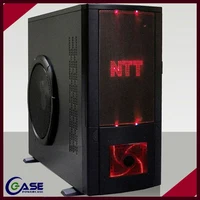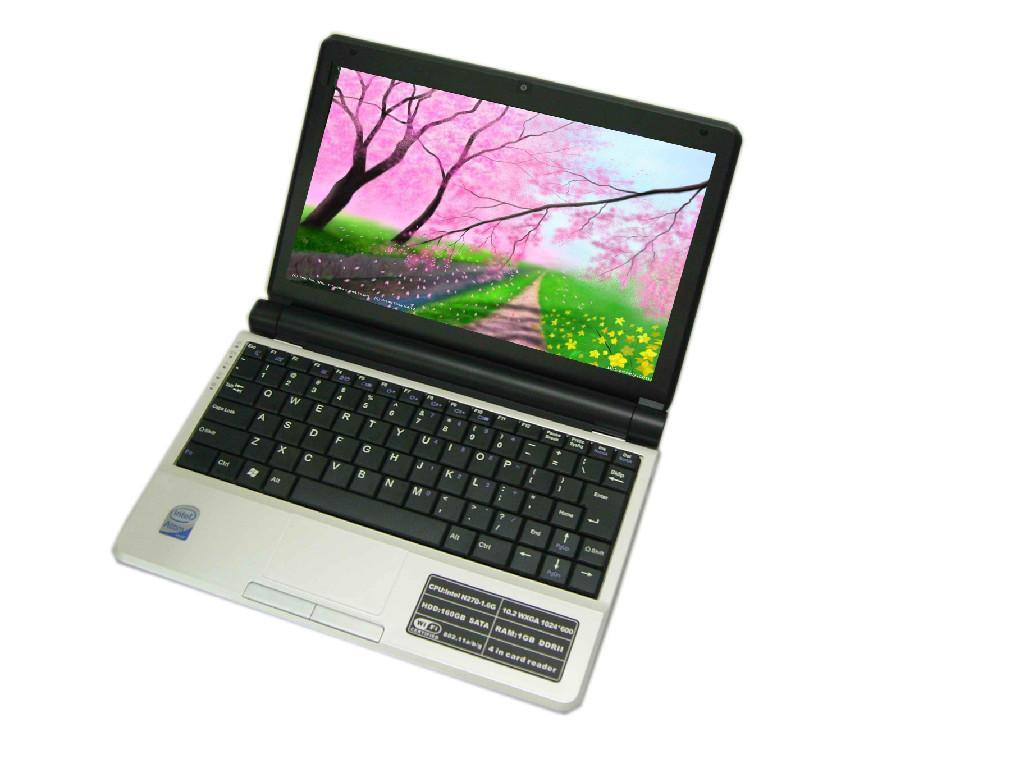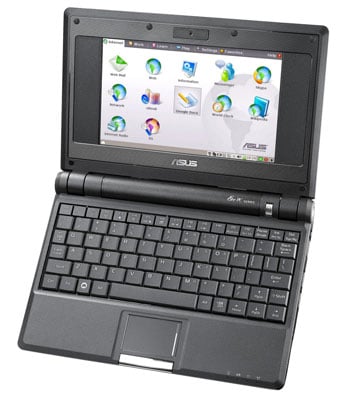Computer Technology
Type of computer, Computer size and power
Computer can be generally classified by size and power as follow, though there is considerable overlap:- Personal computer: A small, single-user computer based on a microprocessor.
- Workstation: A powerful, single-user computer. A workstation is like a personal computer, but it has a more powerful microprocessor and, in general, a higher-quality monitor.
- Minicomputer: A multi-user computer capable of supporting up to hundreds of users simultaneously.
- Mainframe: A powerful multi-user computer capable of supporting many hundreds or thousands of users simultaneously.
- Supercomputer: An extremely fast computer that can perform hundreds of millions of instructions per second.
Supercomputer and Mainframe
Supercomputer is a broad term for one of the fastest computer. Specialized applications that require immense amounts of mathematical calculations (number crunching). Other uses of supercomputers scientific simulations, (animated) graphics, fluid dynamic calculations, nuclear energy research, electronic design, and analysis of geological data (e.g. in petrochemical prospecting). Mainframe was a term originally referring to the cabinet containing the central processor unit or "main frame" of a room-filling Stone Age batch machine. The chief difference between a supercomputer and a mainframe is that a supercomputer channels all its power into executing a few programs as fast as possible, where as a mainframe uses its power to execute many programs concurrently. In some ways, mainframes are more powerful than supercomputers because they support more simultaneous programs. But supercomputers can execute a single program faster than a mainframe. The distinction between small mainframes and minicomputers is vague, depending really on how the manufacturer wants to market its machines.How to make a link:Supercomputer
- Here's the image:

Minicomputer
The Minicomputer is a midsize computer. In the past decade, the distinction between large minicomputer and small mainframes has blurred, however, as has the distinction between small minicomputers and workstations. Minicomputer is a multiprocessing system capable of supporting from up to 200 users simultaneously.How to make a link: Minicomputer
- Here's the image:

Workstation
Workstation computer used for engineering applications (CAD/CAM), desktop publishing, software development, and other types of applications that require a moderate amount of computing power and relatively high quality graphics capabilities. The Workstation computer is like a personal computers, most workstations are single-user computers.However workstations are typically linked together to form a local-area network, although they can also be used as stand-alone systems. In networking workstation refers to any computer connected to a local-area network. It could be a workstation or a personal computer.How to make a link:Workstation
Here's the image: 
Personal computer
A small, relatively inexpensive computer designed for a individual user. All are based on the microprocessor technology that enables manufacturers to put an entire CPU on one chip. Businesses use personal computers for word processing, accounting, desktop publishing, and for running spreadsheet and database management applications. P.C. is short for personal computer or IBM PC. One of the few companies to survive IBM's onslaught was Apple Computer, which remains a major player in the personal computer marketplace. Other companies adjusted to IBM's dominance by building IBM clones, computers that were internally almost the same as the IBM PC, but that cost less. Because IBM clones used the same microprocessors as IBM PCs, they were capable of running the same software. The principal characteristics of personal computers are that they are single-user systems and are based on microprocessors. However, although personal computer are designed as single-user systems, it is common t link them together to form a network. In terms of power, there is great variety. At the high end, the distinction between personal computer and workstations has faded. High-end models of the macintosh and PC offer the same computing power and graphics capability as low-end workstations by Sun Microsystems, Hewlett-packard, and DEC.How to make a link: Personal computer
Here's the image: 
personal computer types
Personal computer can be generally classified by size and chassis/case. The chassis or case is the metal frame that serves as the structural support for electronic components. There are two basic flavors of chassis designs-desktop models and tower models-but there are many variations on these two basic types. The portable computer that are computers small enough to carry. Portable computer include notebook and subnotebook computers, hand-held computers, plamtops, and PDAs.Tower model
The term refers to a computer in which the power supply, motherboard, and mass storage devices are stacked on top of each other in a cabinet. This is in contrast to desktop models, in which these components are housed in a more compact box. The main advantage of tower models is that there are fewer space constraints, which makes installtion of additional storage devices easier.How to make a link: Tower model
Here's the image:
Desktop model
A computer designed to fit comfortably on top of a desk, typically with the monitor sitting on top of the computer. Desktop model computer are broad and low, where as tower model computer are narrow and tall. Because of thir shap, desktop model computer are generally limited to three internal mass storage devices. Desktop models designed to be very small are sometime referred to as slim line models.How to make a link: Desktop model
Here's the image:
Notebook computer
An extremely lightweight personal computer. Notebook computers typically weight less than 6 pounds and are small enough to fit easily in a briefcase. Aside from size, the principal difference between a notebook computer and a personal computer is the display screen. Notebook computer use a variety of techniques, known as flat-panel technologies, to produce a lightweight and non-bulky display screen. The quality of notebook display screens varies considerbly. In terms of computing power, modern notebook computers are nearly equivalent to personal computers. They are the same CPUs, memory capacity, and disk drives. However, all this power in a small package is expensive. Notebook computer come with battery packs that enable you to run them without plugging them in however, the batteries need to be recharged every few hours.How to make a link: Notebook computer
Here's the image:
Laptop computer
A small, portable computer-small enough that it can sit on your lap. nowadays, laptop computer are more frequently called notebook computers.How to make a link: Laptop computer
Here's the image:
Subnotebook computer
A portable computer that is slightly lighter and smaller than a full-sized notebook computer. Typically, subnotebook computer have a smaller keyboard and screen, but are otherwise equivalent to notebook computers.How to make a link: Sub notebook computer
Here's the image:
Hand-held computer
A portable computer that is small enough to be held in one's hand. Although extremely convenient to carry, handheld computer have not replaced notebook computer because of their small keyboards and screens. The most popular hand-held computer are those that are specifically designed to provide PIM (personal information manager) fuctions, such as a calenar and address book. some manufacturers are trying to solve the small kwyboard problem by replacing the keyboard with an electronic pen. However, these pen-based devices rely on handwriting recognition technologies, which are still in their infancy. Hand-held computers are also called PDAs, palmtops and pocket computers.How to make a link: Hand-held computer
Here's the image:
Palmtop
A small computer that literally fits in your palm. Compared to full-size computers, palmtop are severely limited, but they are practical for certain functions such as phone books and calendars. Palmtops that use a pen rather than a keyboard for input are often called hand-held computers or PDAs. Because of their small size, most palmtop computer do not include disk drives. However, many contain PCMCIA slots in which you can insert disk drives, modems, memory, and other devices. Palmtops are also called PDAs, hand-held computers and pocket computers.How to make a link: Palmtop
Here's the image:
PDA
PDA is short for Personal Digital Assistant, a handheld device that combines computing, telephone/fax sender, and personal organizer. Unlike portable computers, most PDAs are pen-based, using a stylus rather than a keyboard for input. This means that they also incorporate handwriting recognition features. Some PDAs can also react to voic input by using voice recognition technologies. The field of PDA was pioneered by Apple Computer, which introduced the Newton Message Pad in 1993. Shortly thereafter, several other manufacturers offered similar products. To date, PDAs have only modest success in the marketplace, due to their high price tags and limited applications. However, many experts believe that PDAs will eventually become common gadgets. PDAs are also called palmtops, hand-held computers and pocket computers.How to make a link: PDA
Here's the image:












